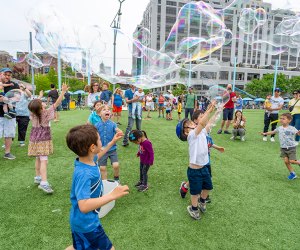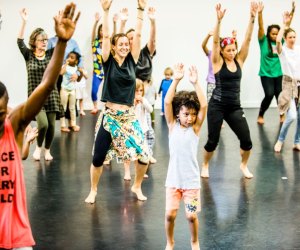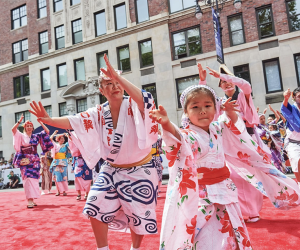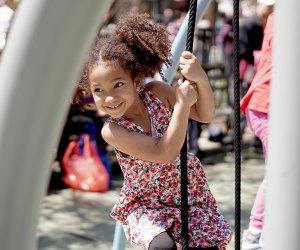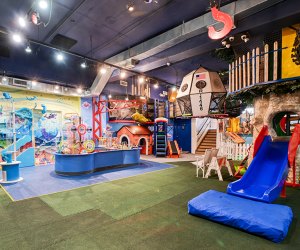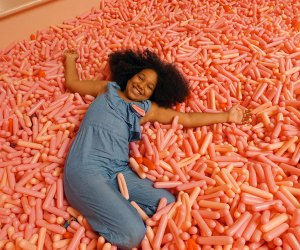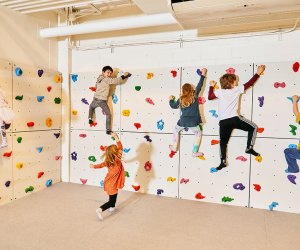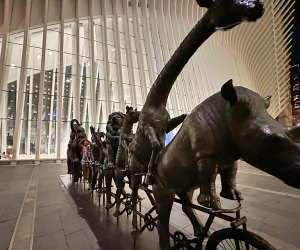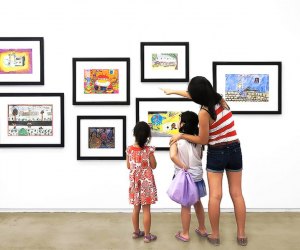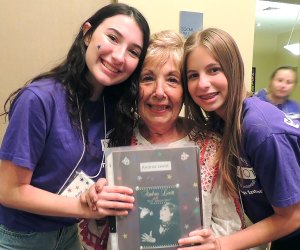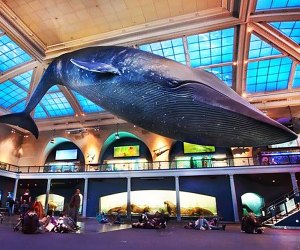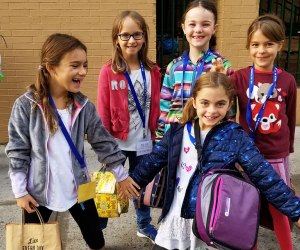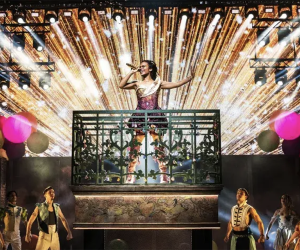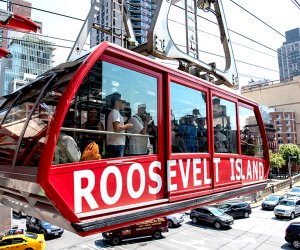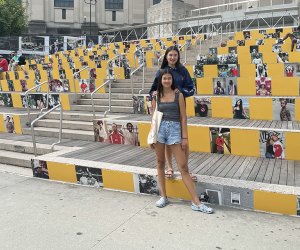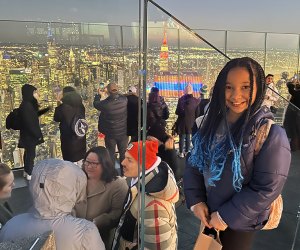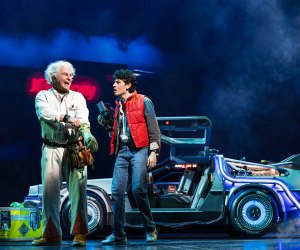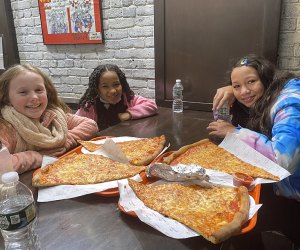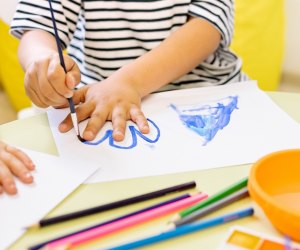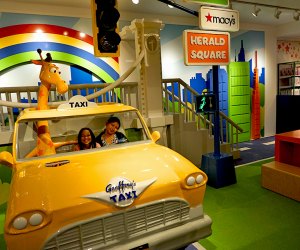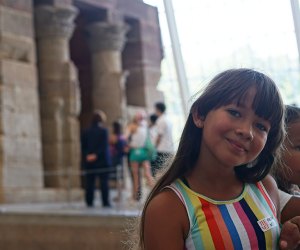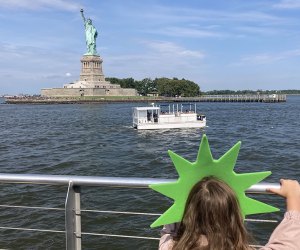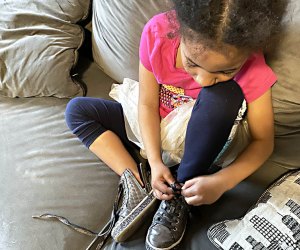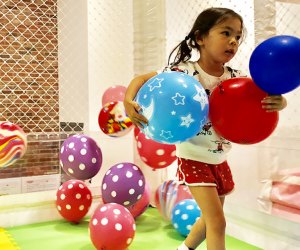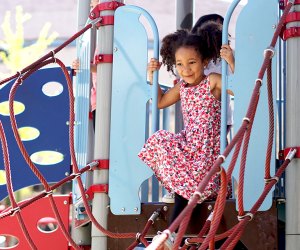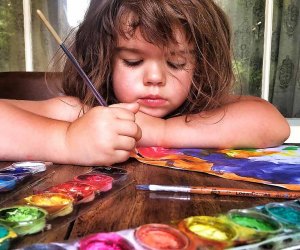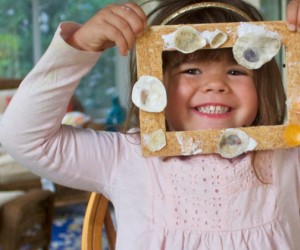Children's Museum Debuts Exhibit Dedicated to Muslim Culture
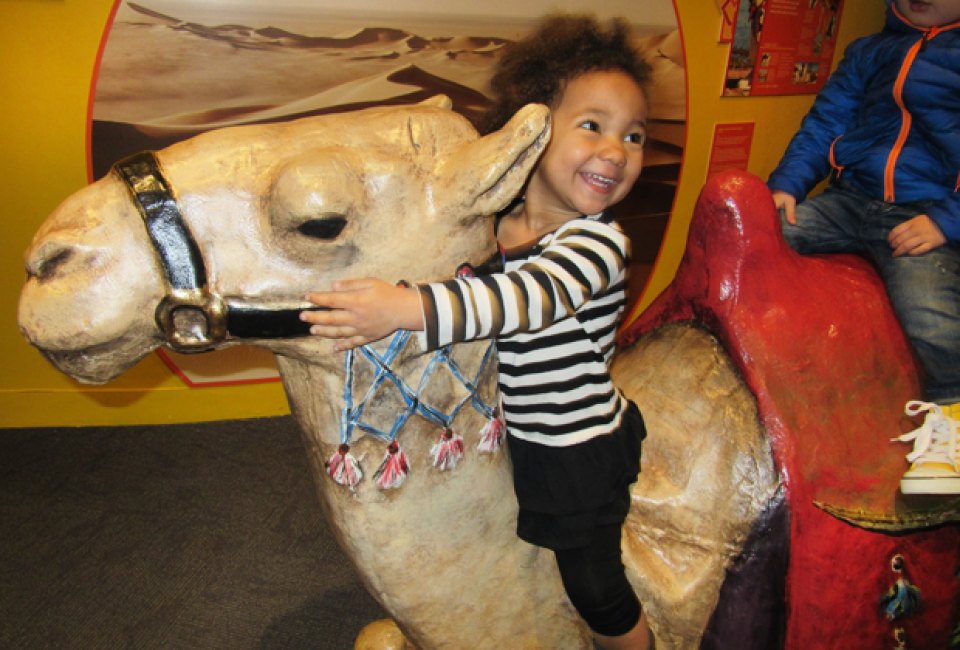
The Children's Museum of Manhattan has long been my go-to spot for maximum tot fun, but when it comes to learning about art, architecture and other cultures, we usually headed elsewhere. The newly-opened America to Zanzibar: Muslim Cultures Near and Far exhibit will change that.
Opened last week, the 3,000-square-foot exhibit takes up the entirety of the museum's first-floor exhibition space and provides a colorful, immersive window into Muslim cultures across the world. The exhibit has been extended through January 2018 and is the fourth in the museum's Global Exhibition Series, which previously highlighted the cultures of Ancient Greece, China and Japan. Read on for the scoop on this vibrant new exhibit.
OUR LATEST VIDEOS
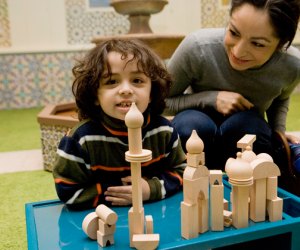
Toddler-level tables let kids try out a different kind of block building. Photo by aommiephotography.com/courtesy of the museum.
CMOM's latest exhibit is designed for children ages 2-10 and provides five different views of Muslim life. As you walk into the exhibit, you'll find yourself in the Courtyard with a water fountain, object guessing game and small tables dotting the area with blocks for kids to build mosques. My toddler dove into her work here, excitedly stacking the usual square and rectangle blocks before adding the unique cone-shapes to the top of her towers. I had trouble pulling her away from her work, which seemed to be a theme for the day. She loved each area of the exhibit more than the last, and we were engaged in the exhibit for well over two hours!
In the Trade Routes section, you'll find exhibits on how goods move through the Middle East by truck (decorate and drive a Pakistani Art Truck), boat (load and captain a dhow, a boat common in the Indian Ocean) and climb aboard a camel to trek your goods across the desert. The boat, in particular, was a huge draw. The two-level structure offered a pair of ship wheels to spin, a pulley system to load and unload goods and a port-hole on the bottom level made for some fun games of peek-a-boo!
RELATED: Best New Winter Art Exhibits for NYC Kids
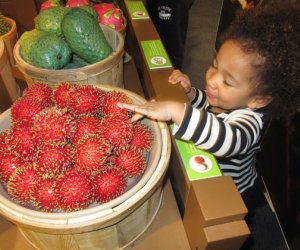
The Indonesian fruit stand features many exotic sights with interesting textures. Photo by the author.
In the Global Marketplace, we were transported through the many Muslim-favored markets, including 116th Street in Harlem, which had a booth in the marketplace all its own, dedicated to the Senegalese tailors and the colorful fabric from which they craft elaborate clothing. A school-age group delighted in playing dress-up with the scraps here, crafting head scarves and dresses to wear as they explored the rest of the market. You'll also be able to step into booths selling Moroccan rugs, Egyptian spices, Indonesian fruits, Zanzibari fish and Turkish ceramics. There were plenty of fun textures to touch here, which were great for my curious toddler, but also some cool smelling stations, which allowed children to push a button and get a whiff of the fruits and spices on display. I myself was slightly disappointed to be called away from a Rubik's-cube like tile puzzle in the Turkish market for a Tajikistan-style tea party by my toddler.
RELATED: NYC's Best Indoor Play Spaces and Fun Zones
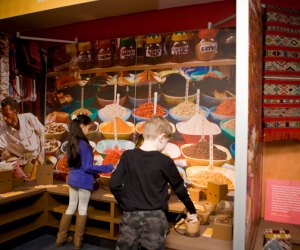
Children can smell the spices at an Egyptian market and pretend to weigh and sell them. Photo by aommiephotography.com/courtesy of the museum.
What struck me in this section was the 3D feeling of the exhibit. Each booth was only a few feet in size, yet the photography on the walls from actual markets made it feel like you were right in the thick of a much larger shopping area and offered an interesting glimpse into the everyday lives of cultures near and far.
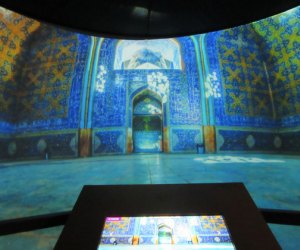
The architecture section includes a projector with spectacular images of famous mosques worldwide. Photo by the author.
Taking that feeling to the next level, however, was the Architecture area. The main feature of this section is a screening room just off the courtyard. Inside, a projector attached to a touchscreen at children's level, allows visitors to tour famous mosques worldwide selecting them from a spinning on-screen globe. Photos of the impressive structures are then projected onto a round screen, which gives a full 360-degree view of the vibrantly decorated interiors, even allowing you to gaze up into the domes.
Rounding out the exhibit, and bringing visitors "back home" is the American Home section. Display cases show a small glimpse into a modern day American Muslim home. A touch-button under each case allow visitors to hear more. You can also try your tongue at learning to say your name in one of 21 languages spoken by Muslim New Yorkers.
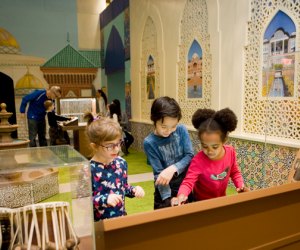
There are plenty of interactive elements in the exhibit, including this music-making section. Photo by aommiephotography.com/courtesy of the museum.
Art plays a huge role in the exhibit, too. The architecture on display is artwork in itself, but there are also paintings from emerging Muslim artists hanging throughout the space and artifacts on loan from the Metropolitan Museum of Art, the Brooklyn Museum and more are sprinkled in display cases.
The exhibit is the result of a five-year collaboration between CMOM and a network of academic, artistic, government and research advisers. CMOM expects to sponsor a variety of public programs and live performances that highlight the diversity of Muslim culture while the exhibit is on display. America to Zanzibar will tour to other institutions after leaving the Children's Museum in about a year.
The Children's Museum of Manhattan is located at 212 West 83rd Street (between Amsterdam and Broadway) on the Upper West Side. Admission to the exhibit, and all public programs, is included with museum admission: $12 for everyone ages 1 and older. While you're there, check out the ever-popular permanent PlayWorks and Adventures with Dora and Diego exhibits, the fairly new Frolic! play space for the 5 & under set and EatSleepPlay, which is dedicated to helping kids grow up healthy.
Top image: The camel in the Trade Routes makes for a fun photo op and climbing structure. Photo by the author.
Places featured in this article:
Children's Museum of Manhattan









